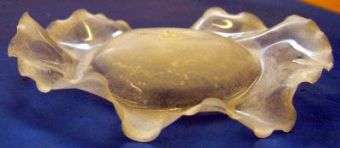Bending Polymers Provides Spontaneous Way to Duplicate Beauty of Nature

There are many objects in nature, such as flowers, that are “pre-programmed” to develop into delicate, beautiful and intrically shaped forms. But can this pre-determined process be duplicated by man starting with plain, flat surfaces?
Yes, say Dr. Eran Sharon and his co-workers, Yael Klein and Efi Efrati, at the Hebrew University of Jerusalem Racah Institute of Physics, who have succeded for the first time anywhere in programming polymer sheets to bend and wrinkle by themselves into prescribed structures. Their work was described in the journal Science.
They made flat discs of a soft gel that, when warmed gently, curved into domes, saddles and even sombrero shapes. Such switchable shape control in a soft material could have applications ranging from optics to biomedicine. The sheets change shape because the gel — a web of cross-linked polymers — shrinks at temperatures above 33 degrees celcius by an amount determined by the local polymer density.
When the density varies across the disc, the sheet buckles to relieve the pressure of uneven shrinkage. The researchers worked out what shrinkage patterns would produce the structures they wanted, then used an automated mixing system to produce “cocktails” of gels with the right properties.
The principle that is the basis for accomplishing this is based on differential geometry, the same principle used by Albert Einstein in his development of the general theory of relativity. This principle, by the way, is the one that gives us the curves in potato chips, for example. The ability to create pre-planned, spontaneously formed objects, say the researchers, can have far-reaching effects for various manufacturing processes or for creating structures that have to meet specific climatic conditions.
Dr. Sharon sees this research as having far-reaching consequences. “Our work enables the creation of highly complex structures, which sometimes would be difficult to manufacture through regular industrial means,” he said. Additionally, such research provides greater understanding of the ways in which complex structures, such as flowers, develop in nature, he added.
Source: The Hebrew University of Jerusalem


















